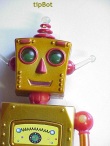Latest Technology
Quantum Credit Cards:
In a report issued last month, a team of scientists from the Netherlands is proposing a security system for credit cards and passports that would leverage the power of quantum physics. Dubbed quantum-secure authentication (QSA), the technology uses a strip of nanoparticles on the card that would be virtually impossible to hack. Read on…
Tips & Tricks
Best Free Panorama Software
How to Resize Icons in Windows 8.1
Backing up the Outlook Address Book
Rename Email Accounts and Mailbox Folders
How to Manage Attachments in Outlook 2013
Computer Safety
Make Your Entire Internet Life More Secure in One Day:

From chat encryption to secure backups, time to find the easiest ways to make your online life secure without causing too much inconvenience.. Read on…
Bonus Video of the Month



